
A Dashboard Physics Lesson
For several years I’ve turned my students loose with a rather boring video of my speedometer as I traveled around town.
The best part of this video is that I don’t need to come up with an assignment. I just play the video. It doesn’t take more than a minute for questions to start bubbling out of the students?
- How long did you do this?
- Where did you go?
- How far did you drive?
And there it is. A physics lesson. I send the students off with a challenge: “tell us everything you can about my trip.”
A few days later students share their findings, and more importantly, how they were found. Students share answers to all their initial questions along with some new answers to questions like:
- What was the average speed?
- What was the top acceleration?
- Should I get a speeding ticket?
At this point there is at least one student who asks, “so what’s the right answer?” You need to be careful here. I keep the emphasis on how we conducted our investigations and which method is more accurate. That being said, I do share more information with students by doing the following.
- At the end, I keep the camera rolling and simply pan over to the odometer to show how far I traveled. I trim this part off the video before initially sharing it with students.
- Use a second camera to synchronize video of the road with the speedometer.
- Collect GPS waypoints to create a Google Map of your trip.
I’ve made the speedometer video many different ways but the best, and safest, way for me to get a straight-on view of the speedometer was to tape a webcam to the dash and record the video to a laptop sitting on the passenger’s seat.
To get the video of the road, I taped my pocket camcorder to a lead block and set it on top of the dashboard. With both the webcam and camcorder recording, I made on loud clap with my hands so I could use that audio point to synchronize the video in Final Cut Express.
The waypoints were collected using the GPS on my phone and the free My Tracks app from Google. Apple iPhone users should be able to find similar apps online. Vernier has software and hardware that also allows you to do a lot with GPS.
I’ve always enjoyed teaching with lessons like this and I think the students enjoy it too. Until recently, I’ve never known what to call lessons like this but I think former math teacher Dan Meyer has come up with a name. Dan uses the simple label “What can you do with this?” or “WCYDWT” at his blog. He explains the need for more lessons like this during a TED Talk and has many other examples.
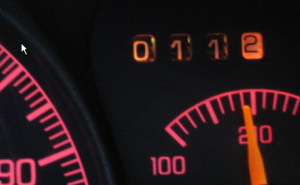
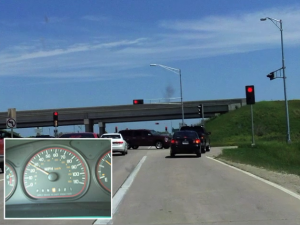
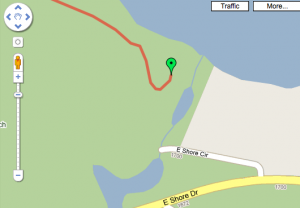
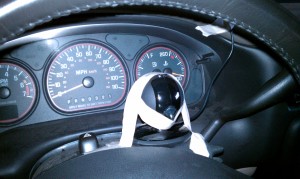
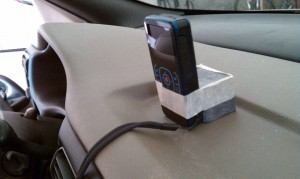
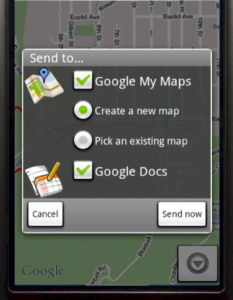
Pingback: Teaching Science 2.0 » Dashboard Physics
I like this and plan on stealing it. Heard it through http://www.teachingscience20.com/
Pingback: Eight Great Gifted Resources
WOW, awesome. Context Rich questions. Keep them coming!!